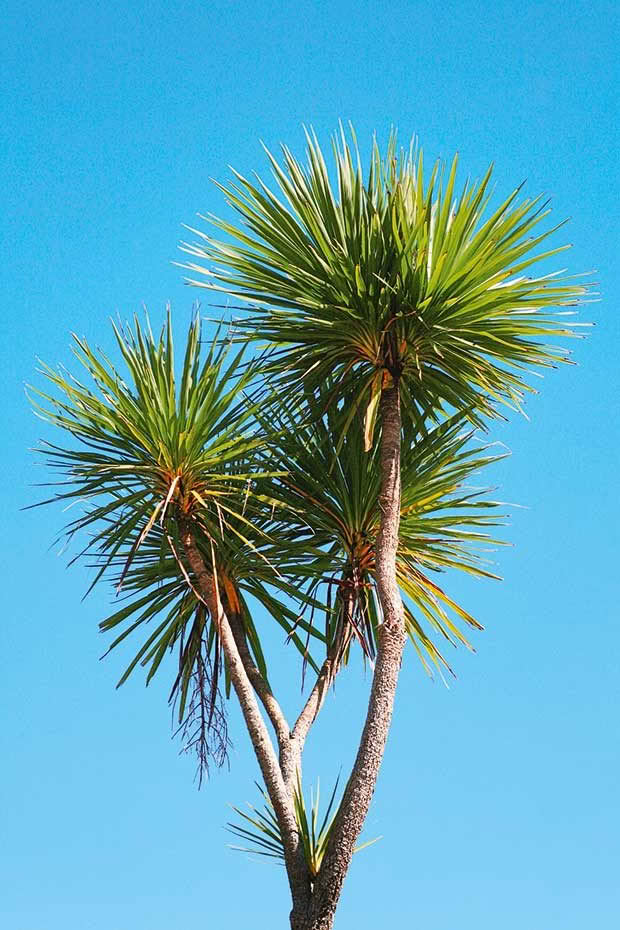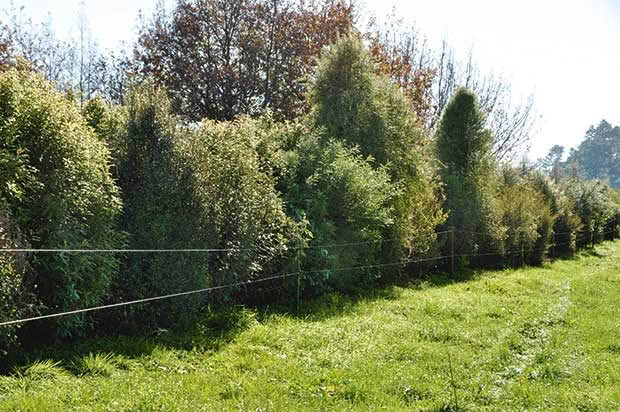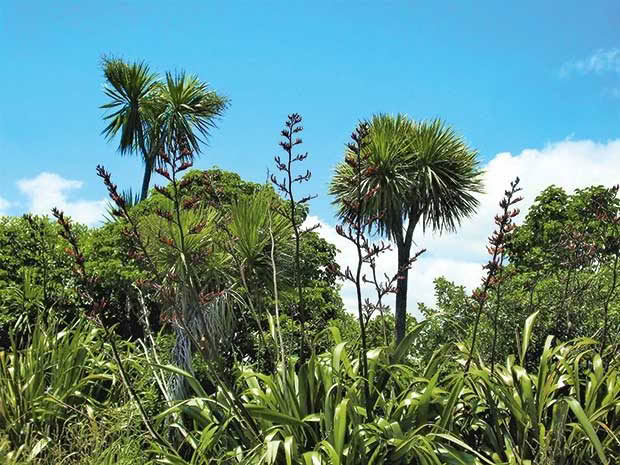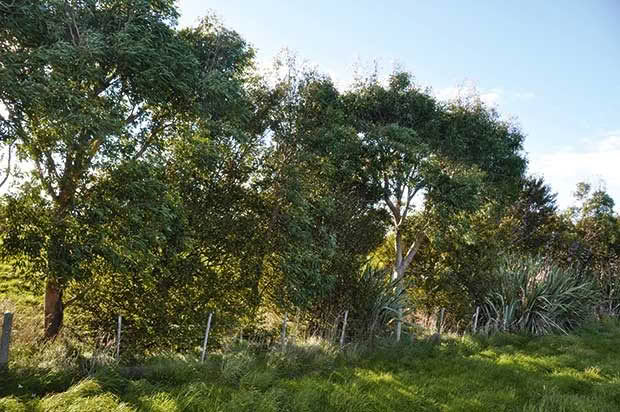15+ shelterbelt tree suggestions

A good shelterbelt will filter the wind, provide food for birds and bugs and above all, keep stock happy.
Words: Sheryn Dean
QUICK GROWING, TALL TREES
Silver wattle
Acacia dealbata is a quick-growing, nitrogen-fixing evergreen you can also coppice for firewood. It has a profusion of yellow flowers in late winter-early spring, often a time bees are short of good food. Tolerates droughts.
Tasmanian blackwood
Acacia melanoxylin is also a quick-growing nitrogen-fixer that can be coppiced for firewood but it prefers shady, moist areas. It grows so well in the Waikato some consider it a weed. In other words, it’s my type of plant!
She-oak
Also known as swamp oak, Casuarina glauca is an extremely hardy evergreen that makes great firewood.

A mixed native hedgerow at Pokaiwhenua Tree Farm is successfully protected with just two hot wires.
MEDIUM HEIGHT TREES
Trees for birds
The favourite of the tui is the Taiwan cherry (Prunus campanulata) but ensure you get a sterile form that does not set seed as the seedlings can be a weed. Mulberries are great in a pie and loved by birds, and the leaves are a favourite stock food.

Natives
Rewarewa, cabbage tree, kowhai, tree fuchsia, hangehange (Geniostoma ligustrifolium) and karamu (Coprosma robusta) are other natives the birds enjoy.
Five finger (Pseudopanax arboreus) and the similar-looking seven finger (Schefflera digitata) will be appreciated by the birds, and cows will enjoy the leaves. Make sure these trees are well fenced.
Fruit and nut trees
Any kind of fruit tree can be poked in among a shelterbelt, but these suggestions are easy-care trees you can plant and then just visit annually to harvest.
In high humidity areas the airflow in your shelterbelt can reduce leaf curl and brown rot in peaches and nectarines. Trees grown from pips are recommended for their robustness.
Prunes and almonds are small trees with a slim, filtering form that produce tasty treats.

A mixed hedgerow can provide habitat ‘corridors’ for birds (and pests), firewood, fruit, fodder and nuts, plus shelter.
Cider apples and quinces can be included, although codling moth control may be needed in spring.
Plums of all types will grow from cuttings poked into the ground in winter. Japanese plums can get quite large. Plant more than one as plums usually need another to cross pollinate.
Olives like dry areas. Figs love dampness and will sucker into a thicket.
BASE PLANTS
Flax
Flax will feed the birds, and your stock will nibble on any leaves they can reach.
Feijoa
As much as I like them, you can only eat so many feijoa. New varieties fruit very early in the season so choose a selection with different ripening times to spread the harvest. It is better to plant half a dozen selected varieties than a row of cheaper seedlings.
Hazelnuts
Hazels need to be planted en masse with mixed varieties to provide cross-pollination. While they can be pruned into a single-trunked tree, if left to grow by themselves they form a multi-stemmed shrub that can be coppiced for sticks and stock fodder. They provide autumn colour and delicious nuts that are much nicer than those available in the supermarkets.
Elderberry
Elders are a quick-growing, multi-stemmed plant that are easy to grow. They are too easy to grow in the South Island where they are considered a weed, but tidy bushes can be grown from cuttings further north. The berries are loved by birds and elder flowers can be turned into champagne.
TIP
Shelterbelts can be habitats and passageways for a range of animals, including pests. Be prepared to actively control rats and possums if you want native birds to colonise it.
MORE HERE:
Love this story? Subscribe now!
 This article first appeared in NZ Lifestyle Block Magazine.
This article first appeared in NZ Lifestyle Block Magazine.
